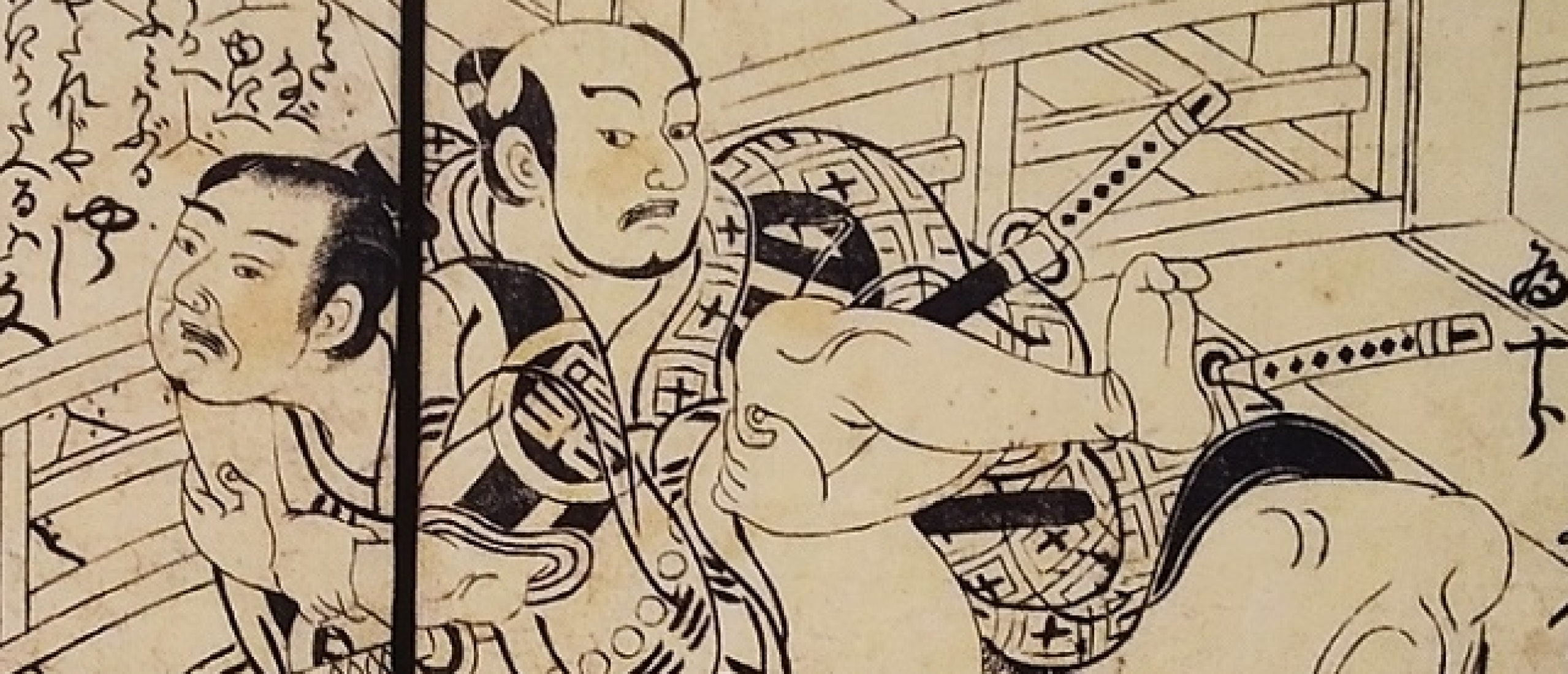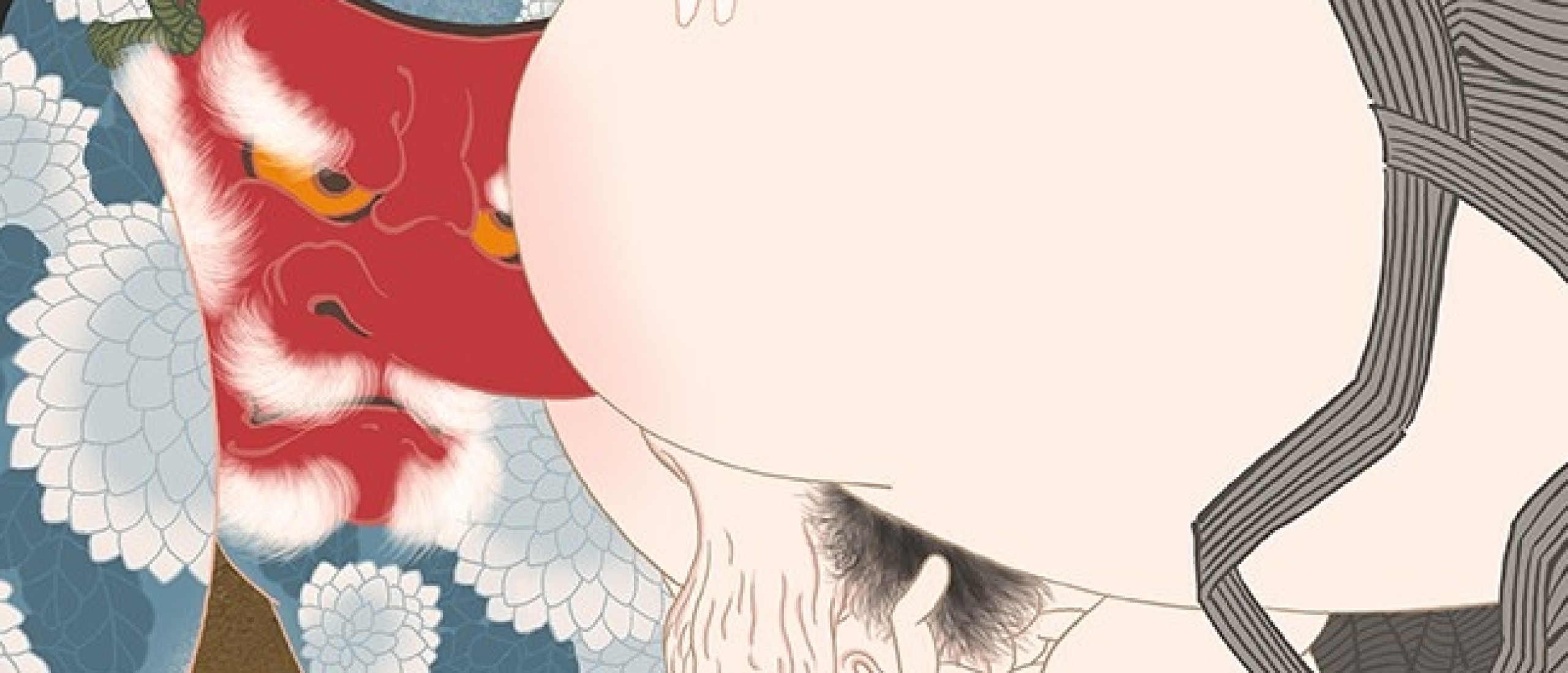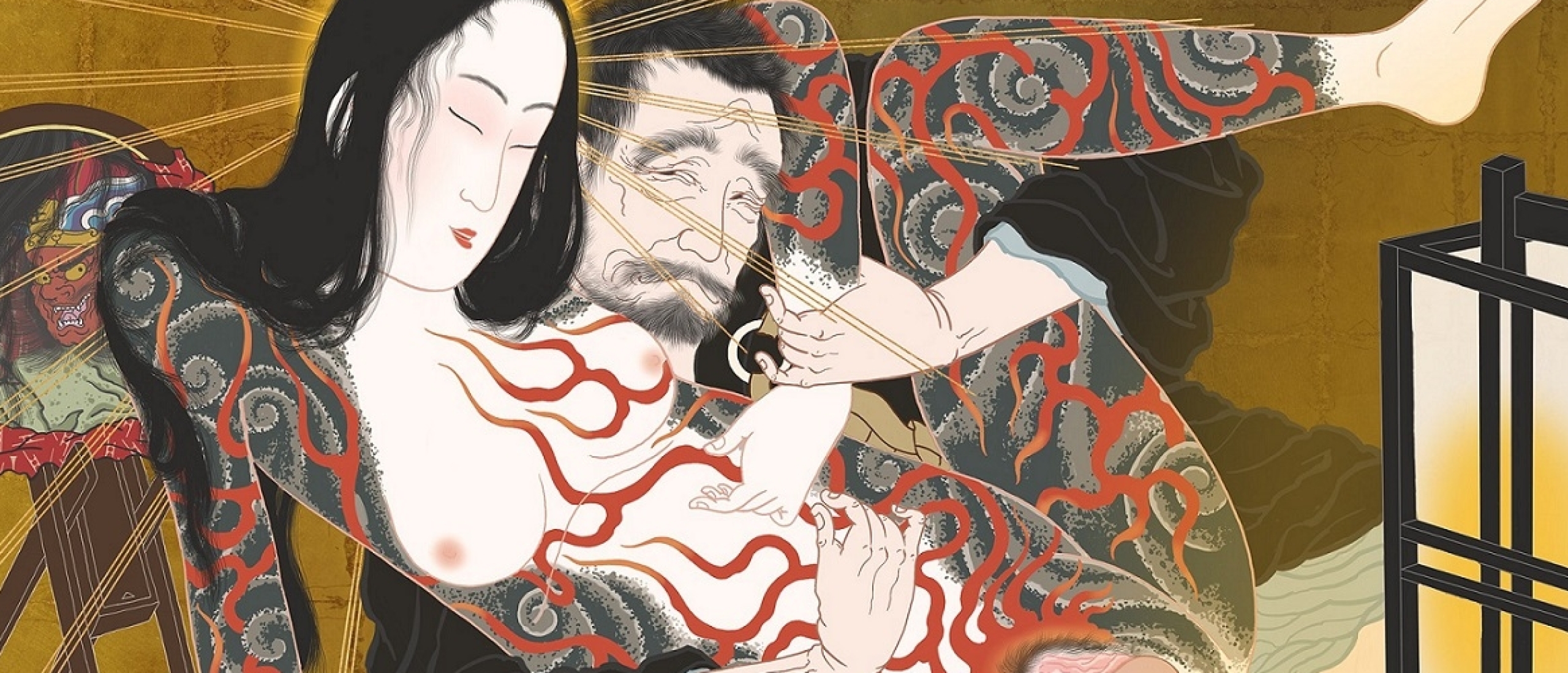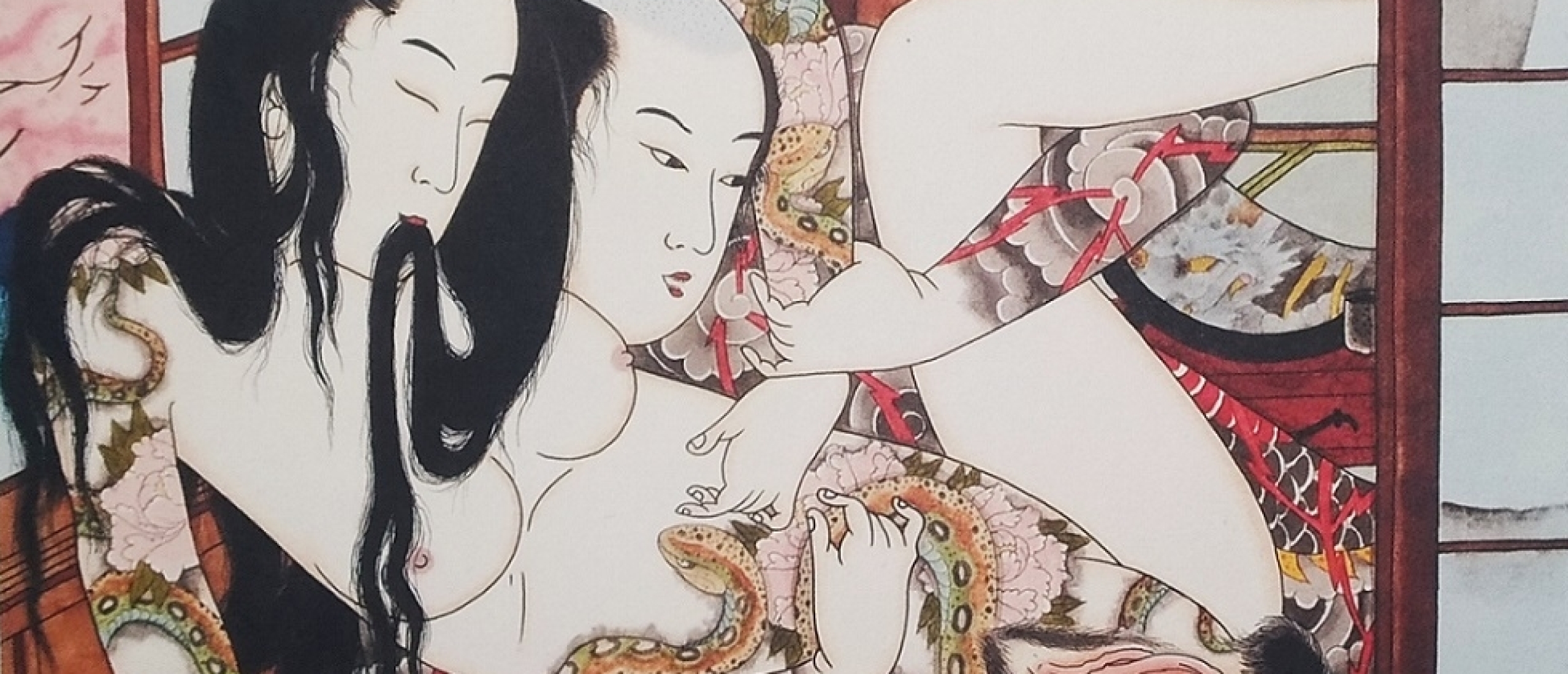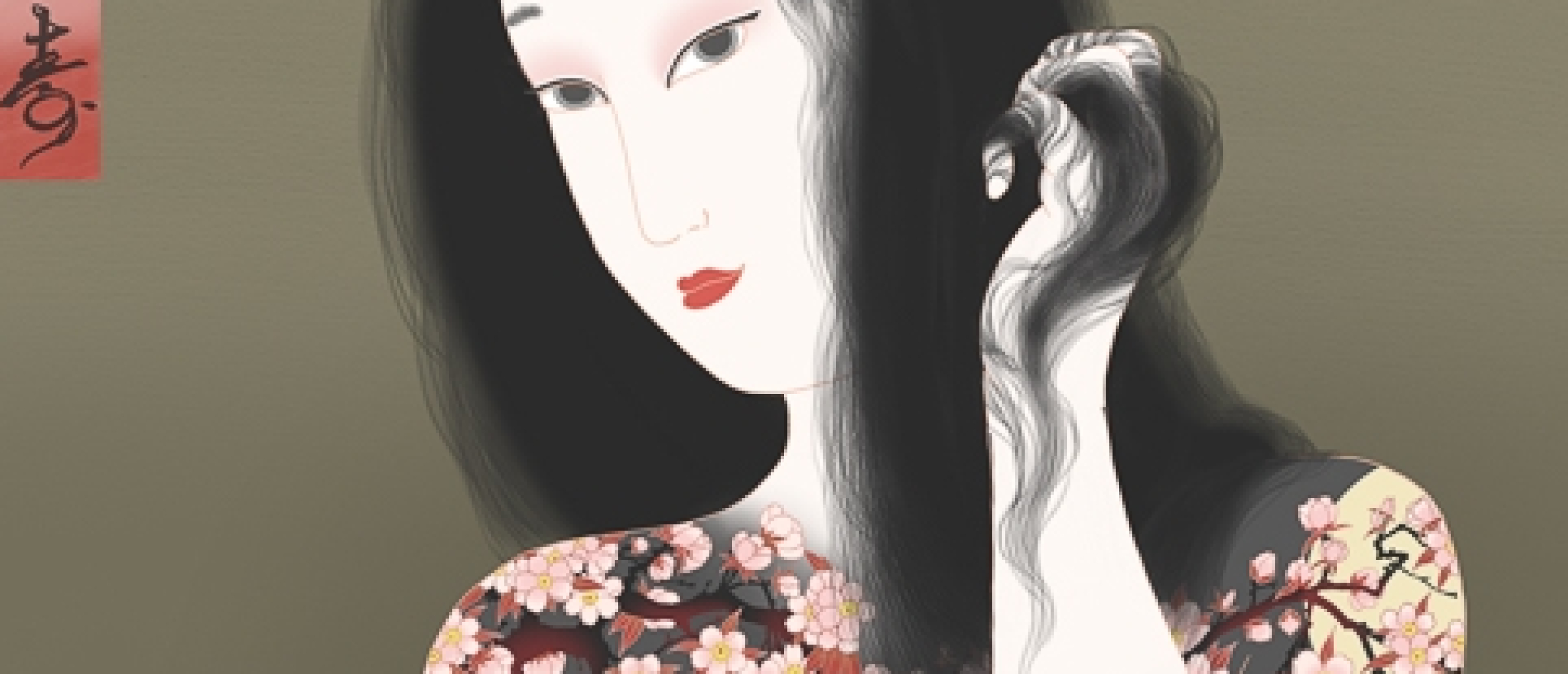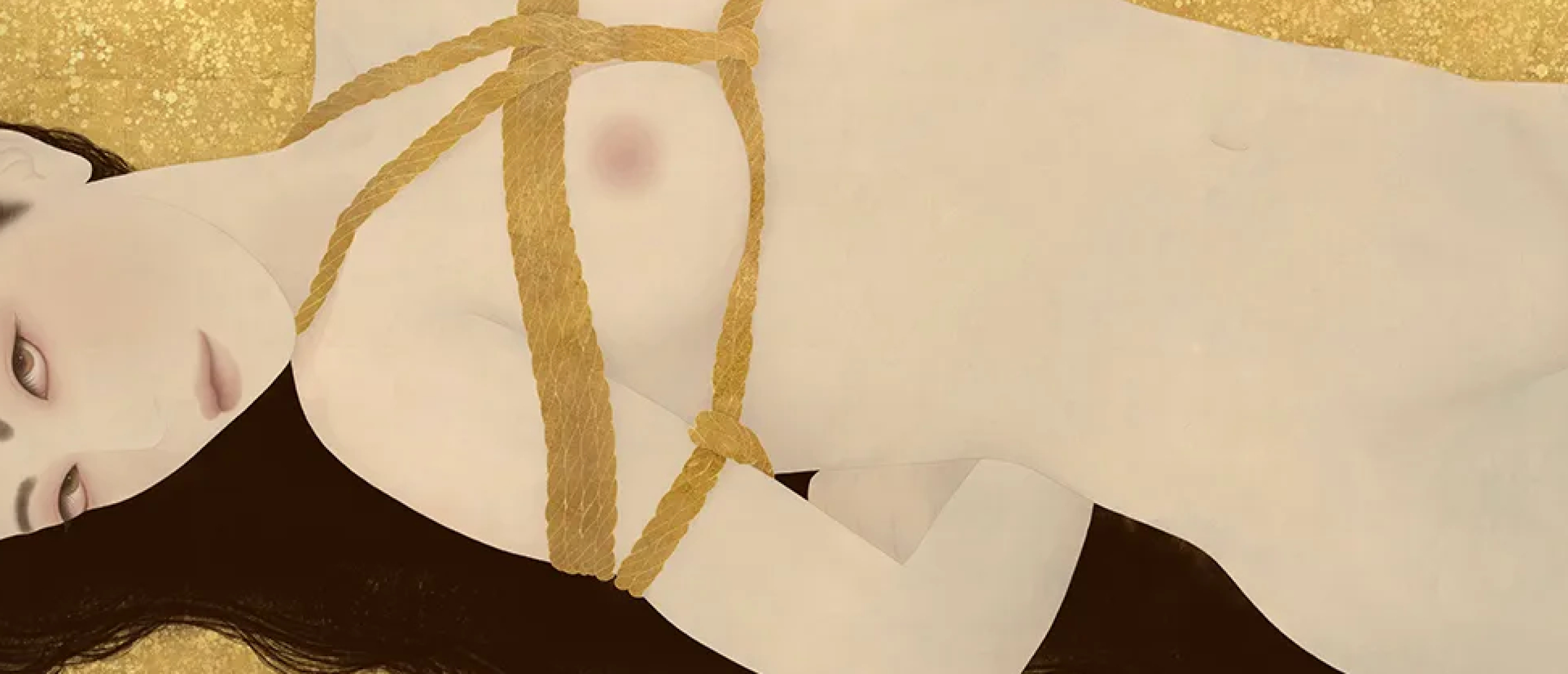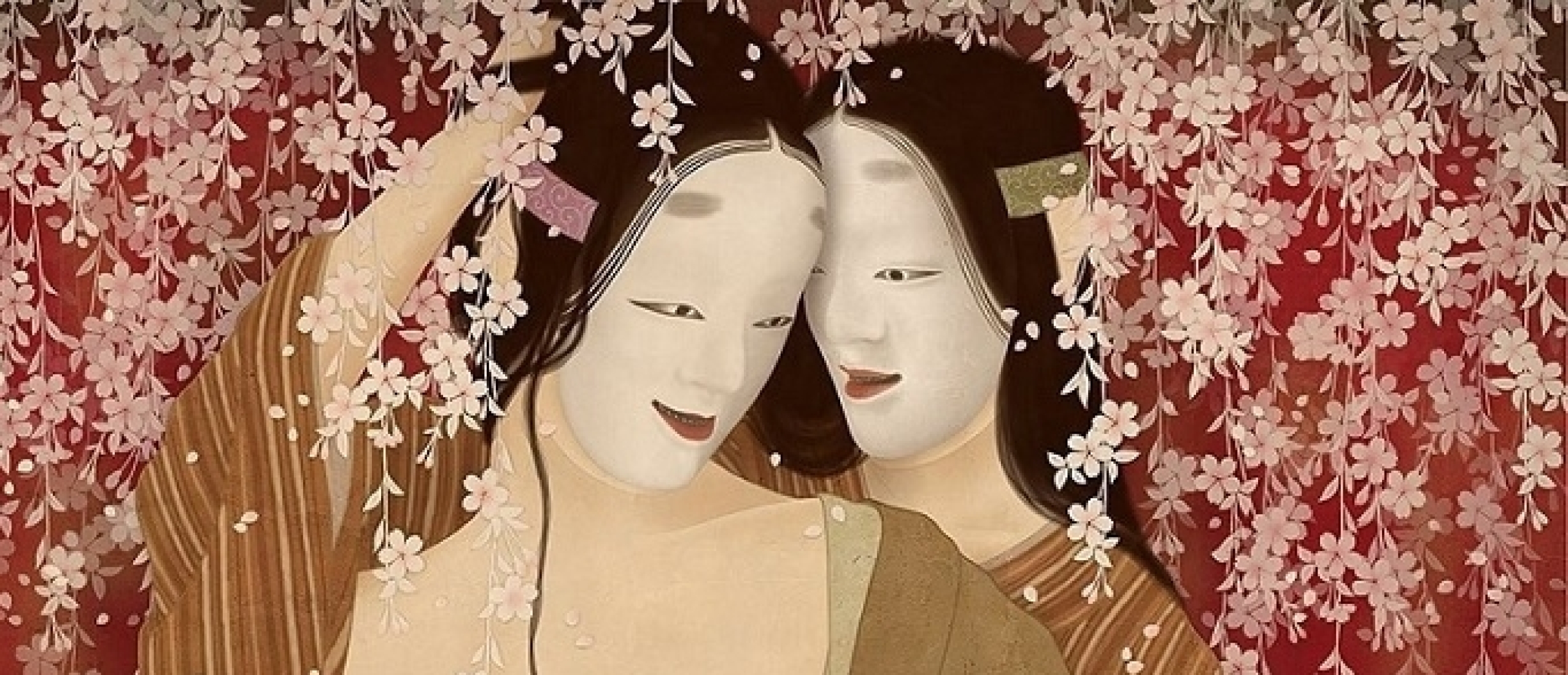
This painting (Fig.1) by the Swedish shunga artist Senju Shunga (1968) portrays a couple in love enjoy the stunning but ever so fleeting beauty of the sakura (cherry blossom) petals falling. Beneath the cherry tree they whisper sweet secrets to each other and weave a fabric of gold thread and blood red silk.
Misled
Senju explores a gay romance in the classical Japanese shunga style. Initially we are misled as both depicted figures wear female attire and noh theater masks portraying young females, but on closer examination we can discern the male features.
Erect Member
We see the figure behind stroking the hair of the figure in front of him while massaging his erect member from underneath his kimono. Also, noh performances were always played by males at the time. In Japanese society at the time, it was the outer attributes like dress, hair and makeup that decided your gender and not your genitalia.
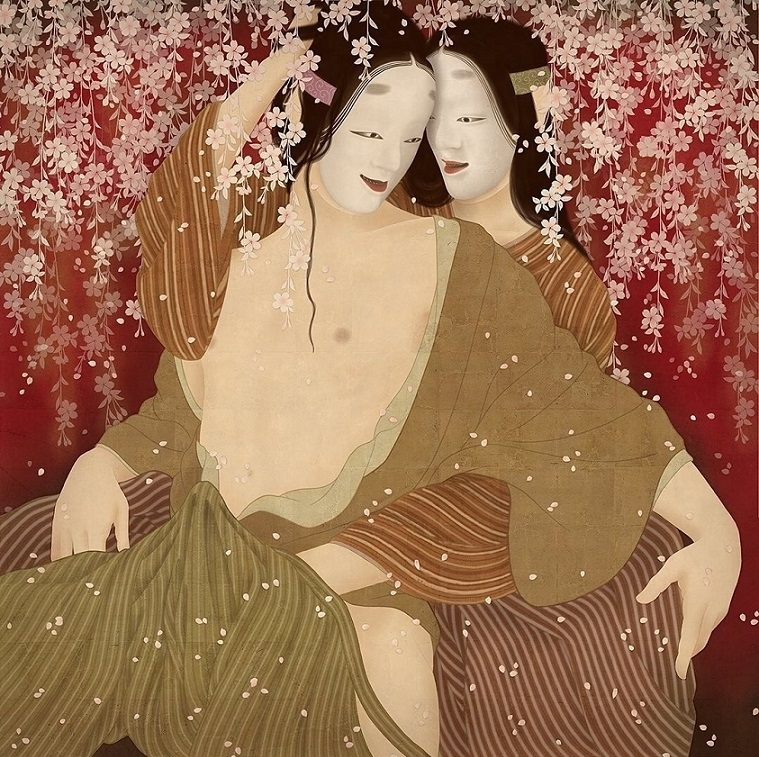
Fig.1. ‘Hanami (viewing the cherry blossoms in spring (September 2020)
The artist gives the following extensive background about his ideas and motives behind the work:
"Sakura, cherry blossoms, have been an integral part of Japanese culture and art for centuries. In the art of shunga, it can represent female sexuality (plum blossoms for male). Its strongest association is perhaps with the idea of mono no aware. This Japanese term refers to the bittersweetness that accompanies the insight of everything’s fleetingness. This way of seeing things has its origins in Japanese Buddhism and it has colored many aspects of Japanese culture over its many historical periods.
Adorns the Skin
I often use sakura, either as a fabric pattern or the flower itself, when creating my erotic art. Sometimes it even adorns the skin of the persons inhabiting my work, assuming the form of irezumi, traditional Japanese tattoos. I have had the fortunate opportunity to have been present myself during Hanami, when Japanese people eat and drink beneath the blossoming trees. It is a memory I often revisit.
Preconceived Ideas
In “Hanami”, I use this celebration as a backdrop for the male lovers enjoying a moment of intimacy as the pale flower petals slowly fall like snow around them. I have attempted to portray gay sex and intimacy a few times before but never felt confident with the results. This time I let my idea mature a long time before I set out to work. The male lovers, dressed in Edo period striped kimono and hakama, wear female noh theatre masks. To hide oneself behind a mask is certainly not a part of the Japanese hanami tradition but rather something I added from my imagination. Partly for aesthetical reasons and partly because I want to play with the viewer’s perhaps preconceived ideas of gender and sexuality.
Warped Perception
Outdated and bigotted religious ideas have engraved in our societies and minds that there should be a certain kind of sexuality that is as “normal”. This delusion of normalcy has caused tremendous suffering for countless human beings, and we would do well in getting rid of it as soon as possible. From an early age, the world around us teaches us to label all things we encounter and attach values to them. In this way, we create a distance between ourselves and the world around us, resulting in a warped perception not based on the reality of things.
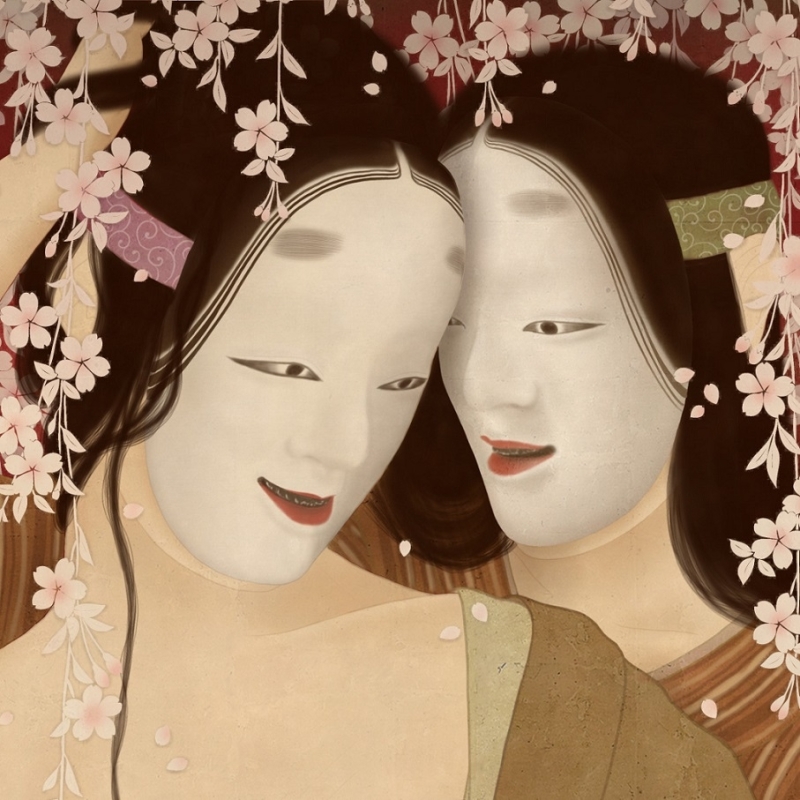
Fig.1a. Detail of the heads
Same-gender Relationships
I think we can all agree that love is one of the most profound expressions of what makes us truly human. So why do so many people have problems with same-gender relationships and attractions? Why do we have an opinion about what is appropriate love or not? These are the questions, among many others, I want to address and discuss in my work. Even if some of my paintings on the surface might seem all about pleasure, these are thoughts that have my attention on an everyday basis.
Nanshoku
As I describe myself as a person that is attracted to women I wanted to know more about a society that didn’t judge or discriminate against male same-sex relationships in the way that has been the norm here in the west. Old Japan was a society that placed men before women and warriors above the rest of the men. Most texts from those periods describe male-male sexual interactions and relationships referred to as nanshoku. Some of the practises and traditions were pederastic and would not be approved of today. However, as there were also a lot of consenting sex and relationships between men, I decided to research this more in-depth.
Frantic Westernization
Before the Meiji era and its frantic westernization, Japan did not see same-sex intercourse or relationships as something especially taboo. Mostly due to the fact that Christianity never really took off in Japan. The island nation’s indigenous religion of Shinto did not criticize or judge same-sex relations, and neither did Buddhism. Men had romantic love affairs, with plenty of poetry and suffering of the heart. Since society was so very male-oriented, many men held the opinion that a woman could never understand the romantic emotions of a man. Only men could fully grasp the workings of another man’s love. Ukiyo-e and shunga prints depicting gay love and sex were popular, and so were books telling the stories of brave men’s sexual escapades with the same sex.
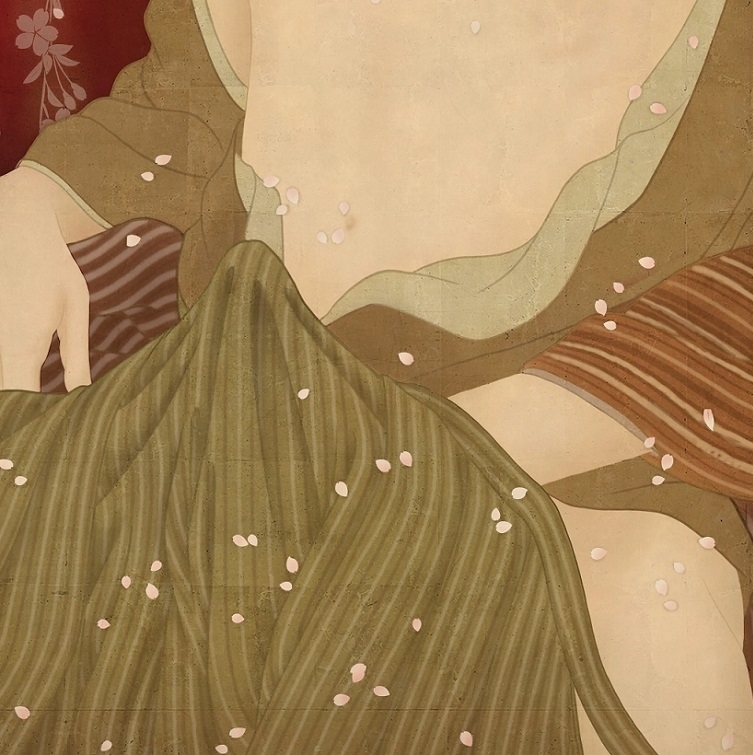
Fig.1b. Detail of the crotch
Male Prostitute
Kabuki theatre, where men played the roles of beautiful women, was also a central part of this male-male culture. The onnagata, specialising in female roles, could be either object of sincere, romantic attention or work extra as a male prostitute. It is also worth to note the fact that when an onnagata in full female dress and makeup had sex with another man, the boundaries of gender became seriously blurred. In Japanese society at the time, it was the outer attributes like dress, hair and makeup that decided your gender and not your genitalia. Quite a different approach to the western idea of it being the genitalia that decides for us who we are in society’s eyes.
Copies of Copies
When I started creating erotic art, I decided early on to try to question the norms of our contemporary society and the idea of “normal” equaling natural. What this means to me is exploring my inner workings to see what kind of biases and prejudices that plague me without me being necessarily aware of it. I am sure we all have plenty of old dusty boxes inside us best destined for recycling. It is the curse of us humans to grow up assuming that we are our true selves, and only late in life find out that we are mostly copies of copies. Our thoughts, emotions and reactions are inherited and challenging them can help us grow to blossom.
Blood Red Silk
For just like the sakura, we are only here for a very brief time in space. A couple in love enjoy the stunning but ever so fleeting beauty of the sakura (cherry blossom) petals falling. Beneath the cherry tree they whisper sweet secrets to each other and weave a fabric of gold thread and blood red silk. When we name things around us, then attaching a value to them according to the warped idea of “normalcy” we will experience anxiety and suffering inside. Love can only be love. There is no “normal” beneath the cherry tree."
In Premium you can find detailed descriptions of two additional pieces by Senju involving a shape-shifting tree spirit, a chivalrous man masturbating and a wonderful kimono with sensual implications.
Click HERE for another shunga work with two noh actors in a homoerotic context (from Fig.9 in this article)
Sources: twocranesgallery.com/gay-shunga, instagram.com,


